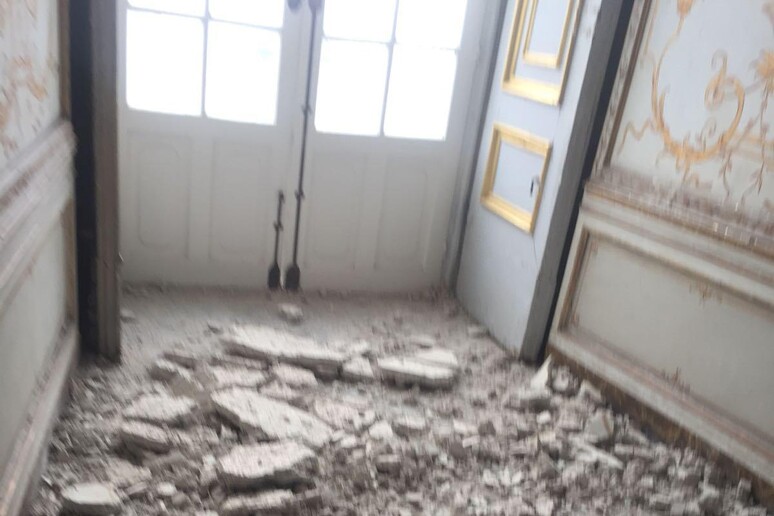A sizeable piece of the roof
of the Caserta royal palace fell late on Sunday morning,
fortunately not injuring anyone.
The incident occurred in the 'Sala delle Dame di Compagnia',
where there were no visitors at the time since access to the
balcony was restricted.
The pieces fell in the middle of the room, near the queen's
bathroom.
"There was no structural" damage, museum director Mauro
Felicori said.
While awaiting more in-depth assessments scheduled for
Monday, Felicori said that prior restoration efforts in that
area had made use of outdated methods.
"At the moment," he said, "one can assume that it was the
result of restoration work done after the 1930 earthquake that
did not hold up well and strengthening interventions carried out
in 1985, when cement injections were still used. Over time,
these were found to be incompatible at times with lime."
"Unfortunately," he added, "these issues - which have nothing
structural about them - are not visible from the outside and in
previous months there were no signs of detachment when for the
first time a survey was carried out on the state of conservation
of the internal finishings of the halls in the historic
apartment. Next week we will assign the restoration works."
Felicori discussed what technical experts had said, noting
that the layer of plaster that fell was from the entire surface
area of the window frame and that it had not given prior signs
of detachment and that there had not been any signs of water
infiltration, cracks, or degradation of any sort.
The fact that the plaster fell all together makes it seem
that it was a layer that had been entirely redone and
redecorated in the repairs after the 1930 earthquake.
The section is close to the part of the building that
suffered the worst damage from the 1980 earthquake, as well,
while in 1985 chains were installed in the walls using long cuts
and cement injections, which may have caused it as well.
Surveyors noted that this part of the royal apartment "is a
vulnerable section of the palace structure", evinced by the fact
that "after every earthquake, even with an epicenter far away,
cracks in the plaster reopened in the stairwell", he said.
Software showing micromovements may shed further light on the
matter.
ALL RIGHTS RESERVED © Copyright ANSA











